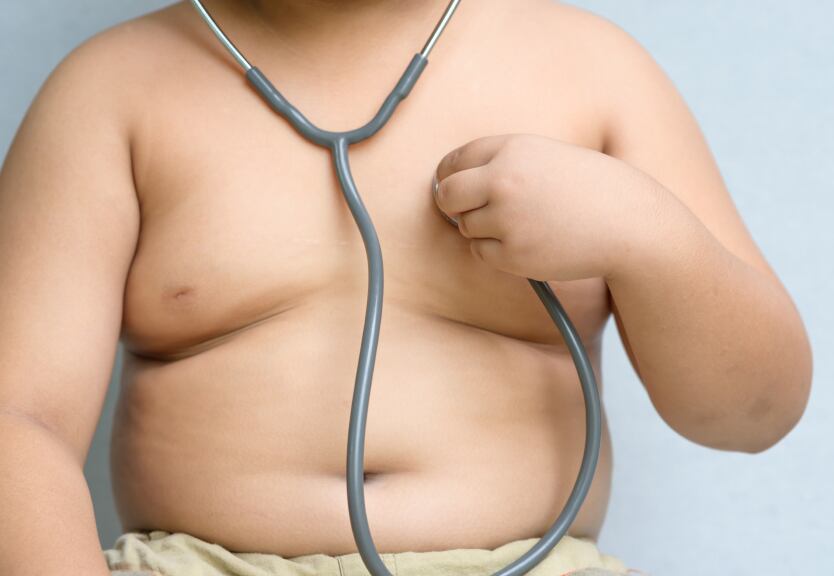A new study from WHO shows that parts of Europe are struggling with much higher rates of childhood obesity than others while a second study shows that adoption of exclusive breastfeeding in Europe remains below the global recommended level.
Dr Bente Mikkelsen, director of the division of noncommunicable diseases and promoting health through the life-course, at WHO Europe, says these two studies outline the problem and a possible solution.
“The longer a child is breastfed, the greater their protection from obesity. This knowledge can strengthen our efforts in preventing obesity.
"Acting on childhood obesity – including severe obesity – can have major benefits, not only for child health and well-being, but also for national health care systems, so we must do all we can to promote and protect breastfeeding across the Region.”
According to the new WHO study, “Prevalence of severe obesity among primary school children in 21 European countries”, severe obesity affects almost 400 000 of the roughly 13.7 million children aged 6–9 years living in the 21 participating countries.
This study is the first that investigates the prevalence of severe obesity in school children and it analysed 636,933 children aged 6–9 years.
Given its impact on education, health, social care and the economy, the new report emphasises that obesity needs to be addressed via a range of approaches, from prevention to early diagnosis and treatment.
How the countries rank
According to the WHO definition, severe obesity ranged from 1.0% in Swedish and Moldovan children, to 5.5% in Maltese children.
Countries from Southern Europe (Greece, Malta, Italy, Spain, and San Marino) had the highest levels of severe obesity, above 4%. Bulgaria and the Republic of Macedonia had a very similar prevalence.
In countries from Western and Northern Europe (eg. Belgium, Ireland, Norway, and Sweden), the prevalence was below 2%. A similarly low level was also found in Latvia and Lithuania.
In other countries from Central and Eastern Europe (eg. Albania, Bulgaria, Czech Republic, Hungary, Moldova, Romania, Slovenia, and Republic of Macedonia), a more heterogeneous picture emerged with prevalence ranging between 1 and 4%.
Moldova and Albania had values among the lowest (1.0 and 1.2%, respectively).
Link between breastfeeding and obesity
The second study, “Association between characteristics at birth, breastfeeding and obesity, in 22 countries”, found that despite the consistent flow of evidence showing the health benefits from breastfeeding and policy initiatives aimed at promoting breastfeeding, adoption of exclusive breastfeeding in the European Region remains below the global recommended level.
WHO recommends exclusive breastfeeding for the first six months of life. Thereafter, infants should be given nutritionally adequate complementary foods with continued breastfeeding up to two years of age or beyond.
This study showed that, in nearly all countries, more than 77% of children were breastfed; but there were a few exceptions – in Ireland 46% of children were never breastfed, in France 38% and in Malta 35%.
Only four out of 12 countries had a prevalence of exclusive breastfeeding for 6 months or more of 25% or higher: Tajikistan (73%), Turkmenistan (57%), Kazakhstan (51%) and Georgia (35%).
According to the study, breastfeeding practices across the region fall short of WHO recommendations for a number of reasons, including: inefficient policies to encourage breastfeeding, lack of preparation of health professionals to support breastfeeding, intensive marketing of breast milk substitutes, and problems in legislation on maternity protection.
Dr Joao Breda, head of the WHO European Office for prevention and control of noncommunicable diseases, added: “The promotion of breastfeeding presents a window of opportunity for obesity prevention policy to respond to the problem of childhood obesity in the European Region.
"Existing national policies to promote breastfeeding practices and how these policies are developed, can lead some countries to be more or less successful in combating obesity,”
Breda also led the WHO Childhood Obesity Surveillance Initiative, known as COSI, from which research was used for both reports.
Consequences of severe obesity
Severe obesity in children is associated with immediate and long-term cardiovascular, metabolic and other negative health outcomes.
When comparing overweight children to children with severe obesity, the latter have a much worse cardio-metabolic risk factor profile.
COSI was established more than 10 years ago to estimate prevalence and monitor changes in overweight and obesity in children aged 6–9 years. Since then, there have been five rounds of data collection in more than 40 countries and among more than half a million children.

